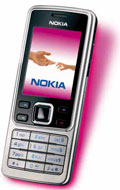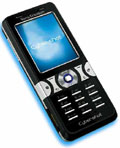|
Summer's
here and so are short-sleeved shirts. Or even tank-tops, if you're
the adventurous sort of guy. Whatever you opt for, this is the
time your biceps will be on greater display than at any other
time of the year. Not a problem for the average gym-going guy
because biceps curls are probably the second-most favoured exercise
for men-the first is, of course, the bench press.
Yet, there are tricks that can get your biceps summer-ready
quickly. Like the 21. Named after the number of repetitions you
do in a single set, the 21 fatigues your biceps muscles better
than the common garden variety biceps curl. In the 21, there are
three different movements rolled into one exercise. Here's how
it works:
Stage 1. Stand with your back straight, feet shoulder-length
apart and hold a weighted barbell. Go for a weight that is, say,
15-20 per cent less than with what you can do a maximum of 10
repetitions. For the first seven repetitions, begin with your
arms fully extended towards the floor, as you would for a normal
barbell curl. Now, raise the weight till your forearms are at
90 degrees to your upper arms. Hold at the top of that movement
for two seconds and then lower the bar to the starting position.
That's one repetition. Do seven.
Stage 2. For the next seven repetitions, you start with
your forearms at 90 degrees to your upper arms (that is, the final
position in the first seven repetitions becomes your starting
position). Now, raise the bar till your hands approach your shoulder.
Pause for a couple of seconds and then return to the starting
position (forearms 90 degrees to the upper arms). That's one rep.
Do seven.
Stage 3. In the third part of the exercise, you have
to do the full range of the biceps curl movement. So, you begin
at the starting position of 1 and lift the bar till your arms
approach your shoulders (final position of 2). That's one rep.
Do seven.
Each of the three seven-rep movements has to be done sequentially
without resting between them. That completes one set. Do two or
three sets of the 21, preferably twice a week for best results
(read: well-defined biceps). Points to note: Use a weight that
allows you to do the movements without swinging your torso forward
or backward; keep your elbows fixed at the sides of your torso
throughout the movements and, keep your back straight. Also, remember
that doing the movements of the exercise very slowly increases
the effect it can have on your muscles. So, try and take two seconds
to curl your arms upwards in each stage and around four seconds
to lower them back to the starting position.
-Muscles
Mani
write to musclesmani@intoday.com
Caveat: The physical exercises
described in Treadmill are not recommendations. Readers should
exercise caution and consult a physician before attempting to
follow any of these.
TIPS TO BOOST
YOUR MEMORY
Worried
over increasing workload and how to multi-task without missing
key points? Here's how to keep your memory intact.
Heart Matters. A healthy cholesterol level is as vital
for mental sharpness as it is for cardiovascular efficiency. When
plaque, caused by "bad" LDL cholesterol, builds up in
blood vessels, it can obstruct blood circulation to the brain,
depriving it of essential nutrients. One possible consequence:
memory problems. Says Dr P. Renjen, Senior Consultant, Indraprastha
Apollo Hospital, New Delhi: "Do half an hour of cardiovascular
exercise every day, such as brisk walking, slow jogging, biking,
or swimming. This will increase blood flow to the brain."
Apple a Day. Says Dr Renjen: "Apples have just the
right dose of antioxidants which help preserve memory by protecting
brain cells against damage from free radicals created by everyday
metabolism." Apples, which are rich in iron, can also boost
your recall abilities.
Red Wonder. Toss down a glass of red wine every day to
preserve your memory. It contains resveratrol, a compound that
helps fight disease and improve blood circulation.
Meditation Mantra. "Meditation can reduce levels
of cortisol, a stress hormone, in the brain," adds Dr Renjen.
Sit quietly in a comfortable position and silently count backward
from 50. As your concentration improves, begin the count from
100, 200 or even 500. This exercise will help you improve your
memory.
No to Noise. Says Dr Renjen: "Multi-tasking reduces
learning because not everyone has the ability to retain information
from various sources at the same time." If you are still
keen on multitasking, learn to pay undivided attention to key
information.
-Manu Kaushik
DRIVE
In-flight Warrior
Only Kingfisher and Jet Airways offer in-flight entertainment among
domestic carriers. Which system is better? BT Drive tests them out.
Kingfisher airlines raised the ante
on domestic flights by introducing In-Flight Entertainment (IFE)
two years ago. Jet Airways has only just followed suit but only
on a limited number of its domestic flights. So, which airline
has the better IFE system? We put both of them to the test. Since
most people fly Economy, we tried out the systems in Economy Class
on both carriers.
First, the Reigning Champion
Kingfisher Class on the airline is outrageously red, but that
isn't the point. Once you have settled down in the aircraft, you
can watch five TV channels or listen to 10 channels of radio.
The former is called Fun TV and has several pre-recorded shows,
including a heavy dose of Bollywood entertainment and some lifestyle
shows.
The radio is also fairly good, and it is a nice way to while
away time, especially if you are 18th in the landing queue. That
said, Kingfisher First Class has far superior IFE, and it isn't
just the games. Passengers can choose what they want to hear or
watch on the Audio-Video on Demand (AVOD) system, which offers
a lot of choice.
All in all, the Kingfisher system is quite good, and on a 90-minute
flight, on which, until two years ago, you had no way to entertain
yourself, it more than gets the job done, but programming could
really be a bit better. The headphones, though, feel and sound
pretty cheap, but Vijay Mallya, Chairman, Kingfisher Airlines,
insists that they are fairly good. And he is equipping some of
his aircraft, particularly in flights to and from Bangalore, with
live tv through a built-in Dishtv receiver on each aircraft. Mallya
says his entire existing fleet will be retrofitted with this service
within the next few months.
Can Jet Win this War?
Very few of Jet's domestic fleet have IFE installed, but I flew
between Bangalore and Delhi on the VT-JGS, one of Jet Airways'
latest 737-800 aircraft, which has it. Even though the crew did
not switch on the system until we reached cruising altitude (and
they switched off the system five minutes before we landed) the
system in Jet's Economy Class is far superior to the one on Kingfisher.
For one, while Jet does not give domestic Economy passengers
a game controller (Business Class travellers on both airlines
get one) Jet has the AVOD system on all seats. There is a multitude
of choice on the Jet system-more than enough for an intercontinental
flight, including full-length serials and whole albums. The touch
screen system does take a bit of figuring out, though. But you
must give credit where it is due; this is a very good system with
a lot of content, which should keep all but the ones with the
most esoteric tastes entertained. And the headphones sound better,
though in both cases it is better that you carry your own from
home with an "aircraft converter" lead. This system
is in the same league as some of the IFE systems on international
carriers.
The only problem is that you won't know if you will get a plane
with IFE. Saroj Datta, Director, Jet Airways, assures BT that
its entire fleet of 737-800 and 737-900 aircraft will "eventually"
be retrofitted, but the only way you can find out which aircraft
does have IFE is to enquire while booking. And, you have to admit,
that is a pain.
Bottom Line
Jet does have the superior IFE system in its Economy Class right
now. Pity it isn't there across its fleet, and Kingfisher scores
over there, and once live television becomes standard across Kingfisher's
fleet, Mallya's airline may well regain the upper hand.
-Kushan Mitra
PRINTED
CIRCUIT
Nice And Affordable
The Sony Ericsson K550i and Nokia 6300 have decent features and
won't burn holes in your pocket.
Lots of people
tell me that this column dwells too much on really high-end products-that
people can aspire to, but can't really own just yet. Therefore,
this time, Printed Circuit will look at two practical, good-looking
phones, with decent features that are priced under Rs 12,500.
Sony Ericsson K550i Cybershot
Price: Rs 11,995
This is the cheaper of the two and is positioned
as an imaging device, with a flash and, interestingly enough,
an auto-focus feature. You have to give kudos to Sony Ericsson
for improving its user interface. And, more importantly, its new
phone looks really nice.
But the narrow-set keys are not that easy
to use on the K550i, especially when typing. But this is a shooter,
and the auto-focus feature-the first time this feature is being
made available at this price range-removes blurred images from
the equation. In fact, it is a fairly fast shooter; there isn't
this awful lag between the time you press the shutter and the
time the image actually gets resolved. Okay, there is some lag,
but it isn't as bad as, say, the lag on some other camera phones.
The 2 megapixel camera gives decent colour and the flash does
work, at least at short range.
If you were to ask me, I would suggest that
you should spend quite a bit more, almost Rs 6,000, and get the
SonyEricsson K790i, which is a brilliant device with an excellent
3.2 megapixel camera. But for the price, the K550i delivers very
good imagery. Granted, it's not the easiest phone in the world
to use (though it is nowhere near being the worst) and the pc
software could do with some reworking. But, if you want a good
camera on your phone and do not have a huge budget, this is a
great device.
 Nokia
6300 Nokia
6300
Price: Rs 12,700
This is possibly the nicest handset I have
received for review from Nokia in a while. I am not saying that
the E-series or N-series phones that one keeps getting are bad,
but sometimes, and especially after the N95, you wish you had
a nice simple phone-one that could do everything like send and
receive e-mails, play music and videos as well as shoot the occasional
picture-in an attractive package that doesn't make your trouser
pocket look obscene.
I liked the fact that when I typed text messages,
the font was nice and big, the screen contrast was good and nothing
was too complicated. So what if the camera isn't that great-there's
too much lag and low-light quality is very poor, but for casual
shots it works fine. The 6300 has a nice easy keypad, all the
buttons are well laid out, it has a loud enough speaker so that
the morning alarm doesn't fail to wake you up and a lovely screen.
Sure, more expensive phones can do a lot more, but I liked the
phone.
The only problem I had with both devices
was quite basic-they both come with minuscule data cards, but
then again, these phones are not targeted at really heavy users,
and data card prices are coming down as well. Make no mistake,
these are two very good phones, but I will gravitate slightly
towards the Nokia because of its ease of use factor. But if it
is image quality you want, don't look beyond the Sony Ericsson.
-Kushan Mitra
|







 Nokia
6300
Nokia
6300